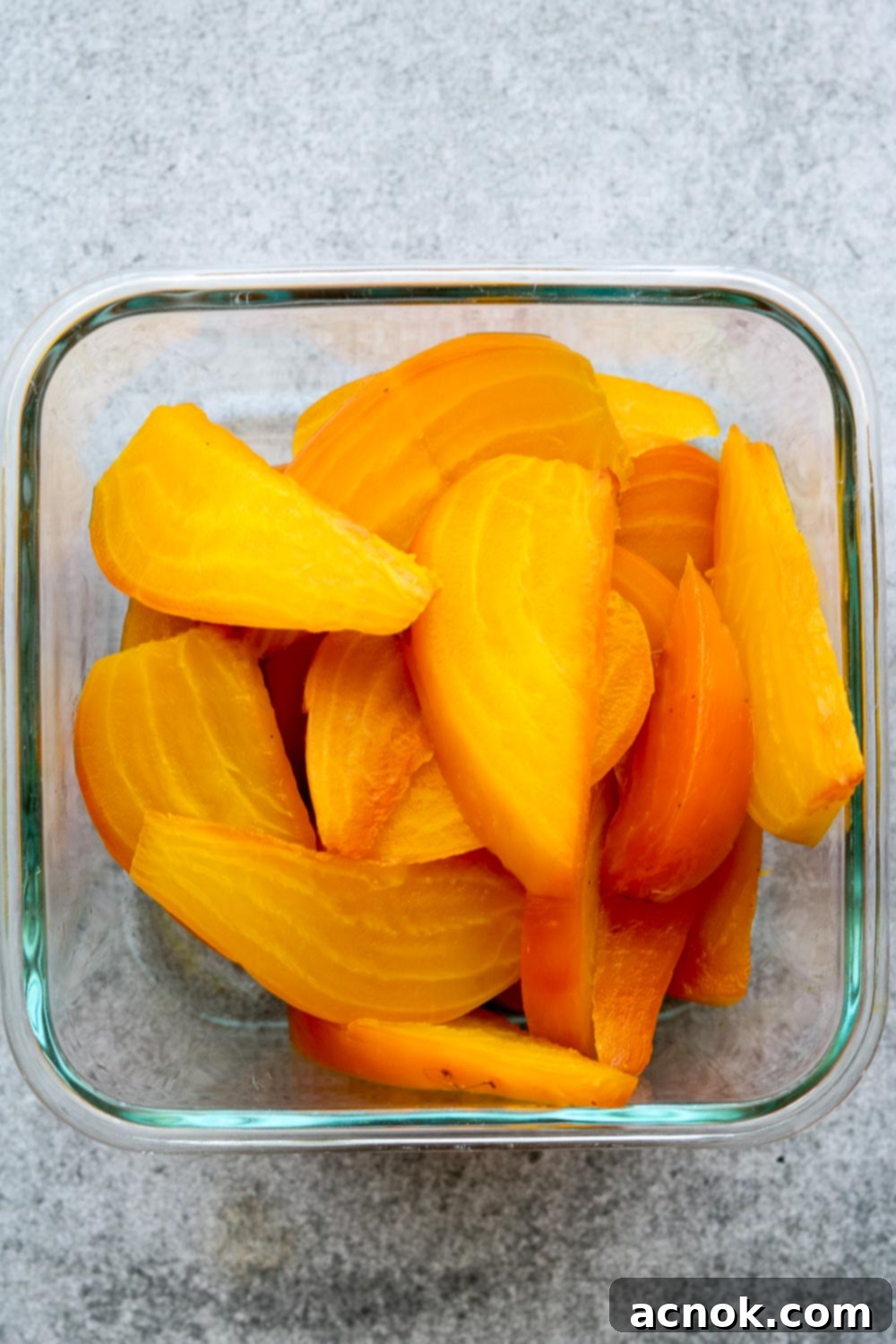How to Perfectly Roast Beets for Delicious Salads: A Simple Step-by-Step Guide
If you’ve been searching for an effortless yet incredibly rewarding method to prepare beets for your favorite salads or as a delightful side dish, you’ve come to the right place. This comprehensive guide will walk you through a simple and foolproof process to achieve beautifully roasted beets every single time. Prepare to transform humble root vegetables into a culinary sensation that will elevate any meal.
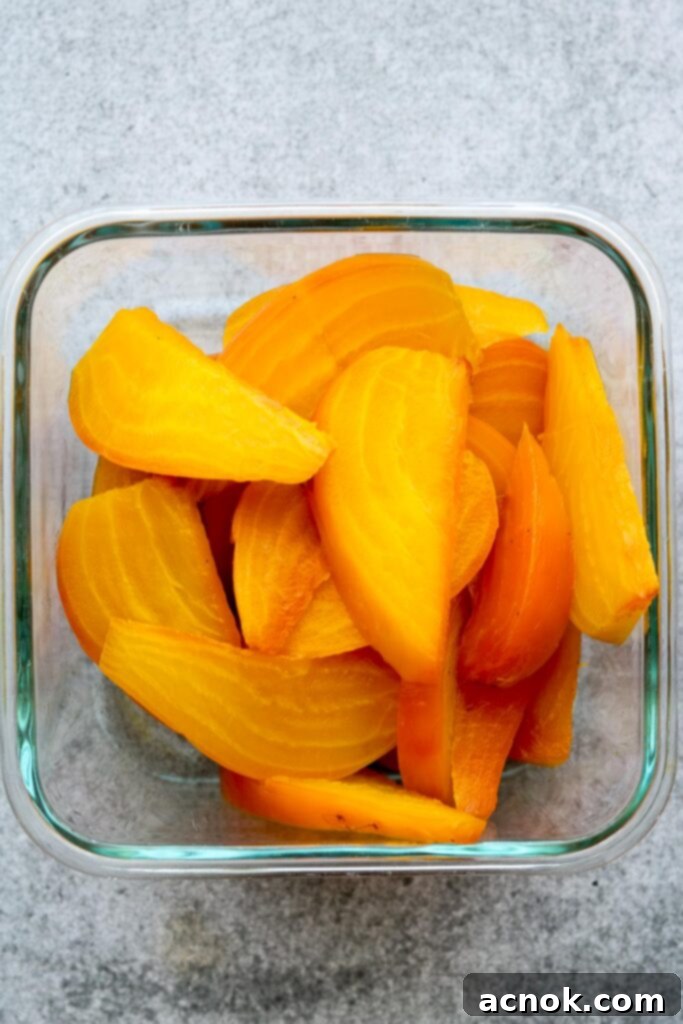
Beets have truly experienced a remarkable renaissance in the culinary world over the last few years. For many, memories of holiday dinners might conjure images of a forlorn bowl of dark, sliced beets, often untouched and feeling somewhat out of place. These once-maligned root vegetables have, fortunately, shed their old reputation, thanks in large part to the magic of roasting.
Fast forward to today, and fresh roasted beets are celebrated for their slightly caramelized, tender texture and a delicate, earthy sweetness that is miles away from their canned counterparts. Roasting brings out their best qualities, making them incredibly versatile and utterly delicious. They pair wonderfully with beloved ingredients like creamy goat cheese, crisp arugula, and crunchy walnuts, opening up a world of culinary possibilities. Once you master the art of roasting, beets become a blank canvas for countless dishes. For inspiration, consider this Roasted Golden Beet Salad with Quinoa or a Simple Roasted Beet and Feta Salad, both perfect examples of how roasted beets can truly shine.
Why Roast Beets? Unlocking Their Sweet, Earthy Flavor
Roasting is, hands down, one of the best ways to prepare beets. Unlike boiling, which can leach out flavor and nutrients, or pickling, which drastically alters their natural taste, roasting concentrates the beet’s natural sugars. This process leads to a delightful caramelization on the outside and a tender, slightly chewy interior. The result is a beet that is sweet, earthy, and incredibly flavorful, with a texture that is firm enough to hold its shape in a salad yet soft enough to melt in your mouth. Roasting also makes the skin much easier to remove, simplifying preparation significantly and making them ideal for a variety of healthy beet recipes.
The Nutritional Powerhouse: Health Benefits of Beets
Beyond their delicious taste and vibrant color, beets are packed with an impressive array of health benefits. They are a rich source of essential vitamins and minerals, including folate (vitamin B9), manganese, potassium, iron, and vitamin C. Beets are also high in fiber, which is crucial for digestive health and promoting a feeling of fullness. Furthermore, they contain unique compounds called betalains, which are powerful antioxidants and anti-inflammatory agents, giving them their characteristic deep red hue. Regular consumption of beets has been linked to improved blood flow, lower blood pressure, enhanced athletic performance, and even cognitive health. Incorporating roasted beets into your diet is a simple and delicious way to boost your overall well-being and enjoy the benefits of this remarkable root vegetable.
Gathering Your Essentials: Ingredients and Equipment for Oven-Roasted Beets
To embark on your journey to perfectly roasted beets, you’ll need just a few simple ingredients and basic kitchen tools:
- Fresh Beets: Choose firm, smooth beets with vibrant colors. If the greens are attached, they should look fresh and crisp, indicating the beet’s freshness. You can use red, golden, or even striped beets for different visual appeals.
- Olive Oil: A good quality extra virgin olive oil works best for flavor and to help them caramelize beautifully during the roasting process.
- Kosher Salt: Or any coarse salt to enhance the natural sweetness of the beets and bring out their earthy notes.
- Freshly Ground Black Pepper: To add a touch of subtle spice and depth of flavor.
- Baking Sheet: A sturdy, rimmed baking sheet is essential to contain any juices and for even heat distribution.
- Aluminum Foil: For wrapping the beets, which helps steam them to tender perfection and prevents them from drying out in the oven.
- Parchment Paper: To prevent sticking to the foil and the baking sheet, making cleanup even easier. It also protects the beets from direct contact with aluminum.
- Sharp Knife and Cutting Board: For trimming and slicing the beets safely and efficiently.
- Paper Towels or Clean Kitchen Towel: Indispensable for gently rubbing off the skins after roasting.
How to Roast Beets for Salad – A Foolproof Step-by-Step Guide
Follow these simple steps to achieve perfectly tender, sweet, and flavorful roasted beets that are ideal for any salad or side dish. This method is incredibly easy and yields consistent results every time.
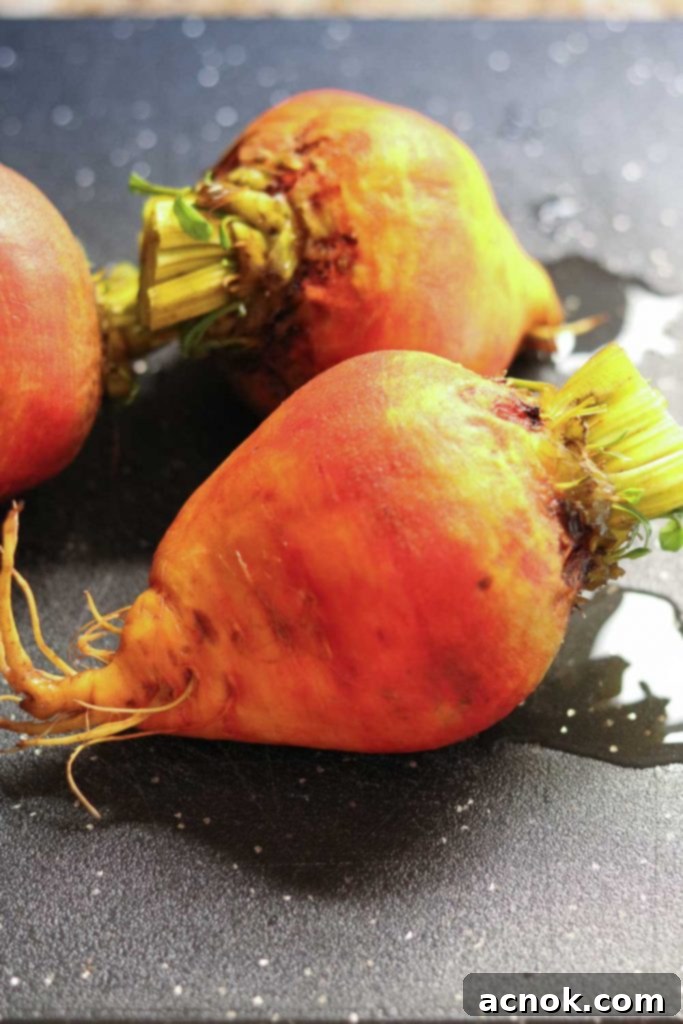
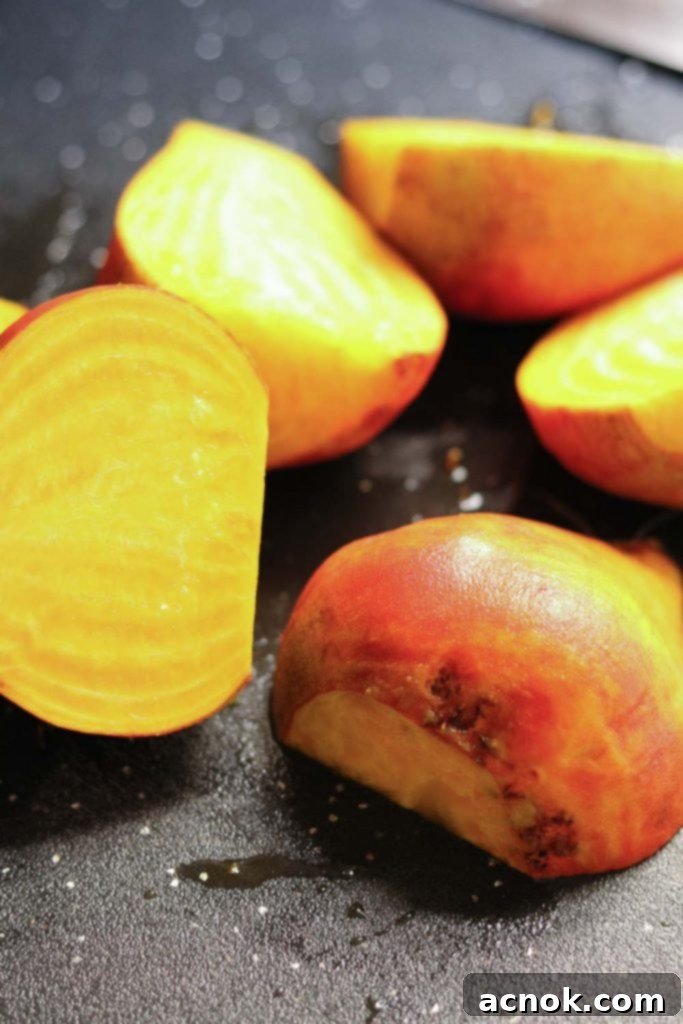
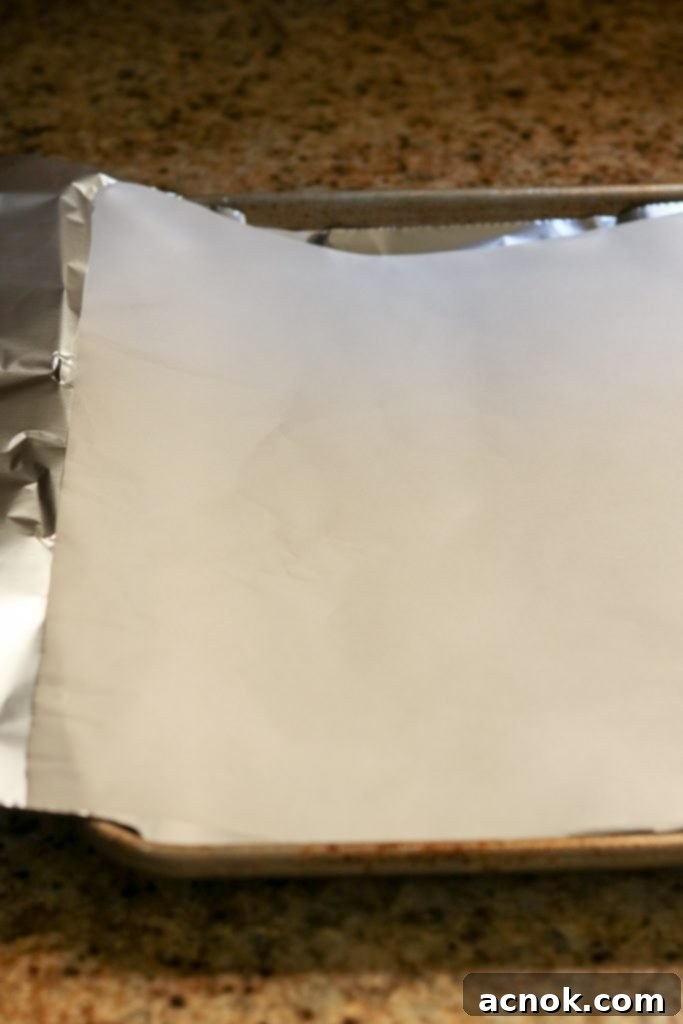
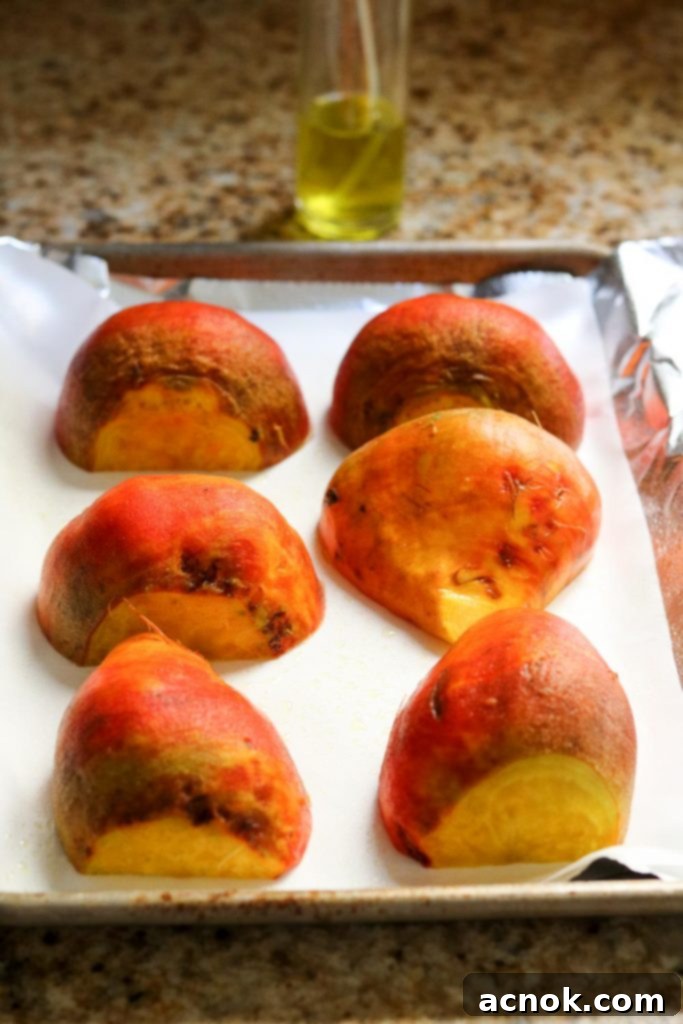
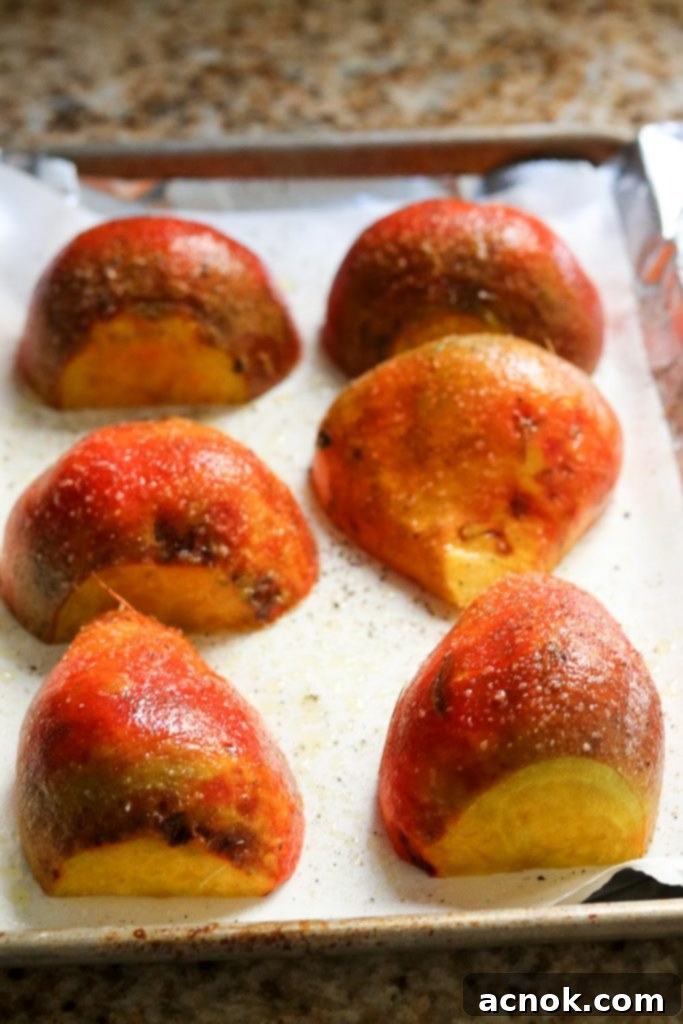
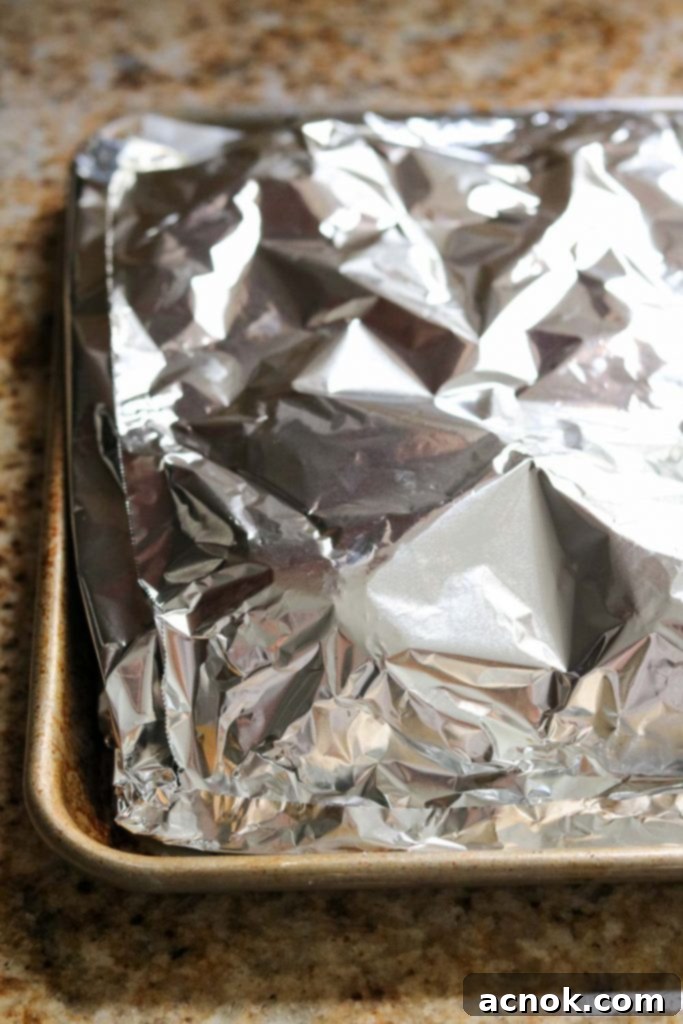
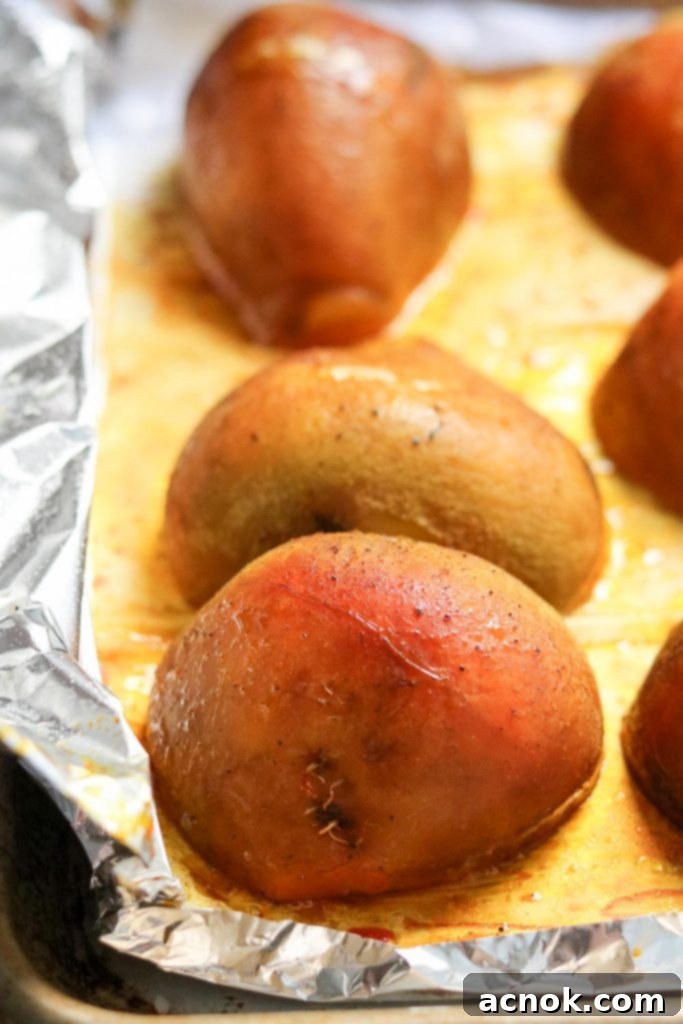
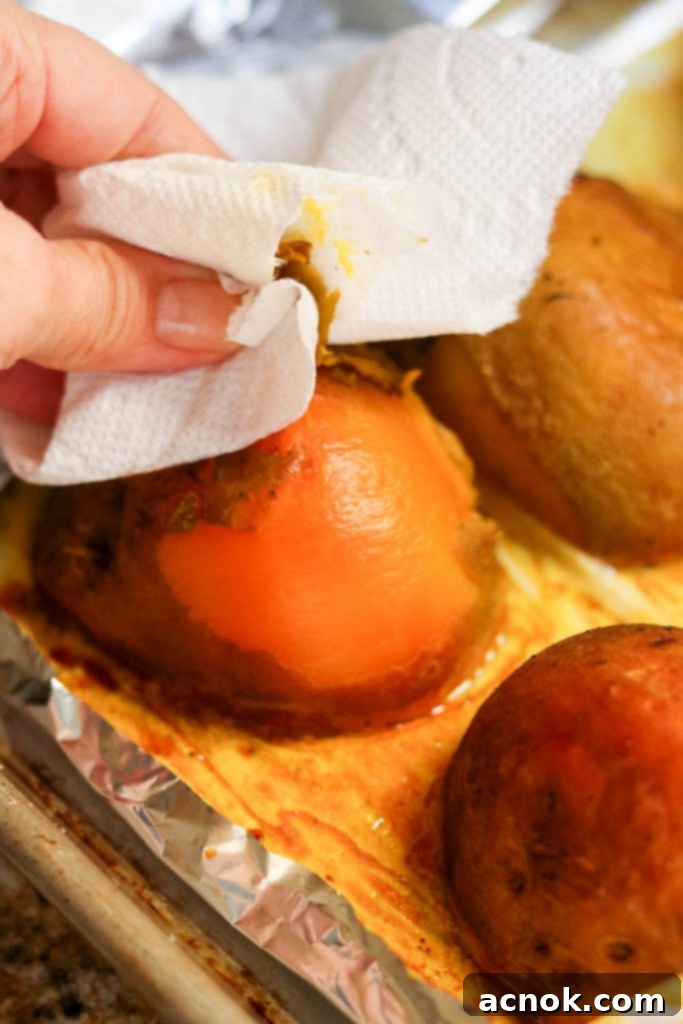
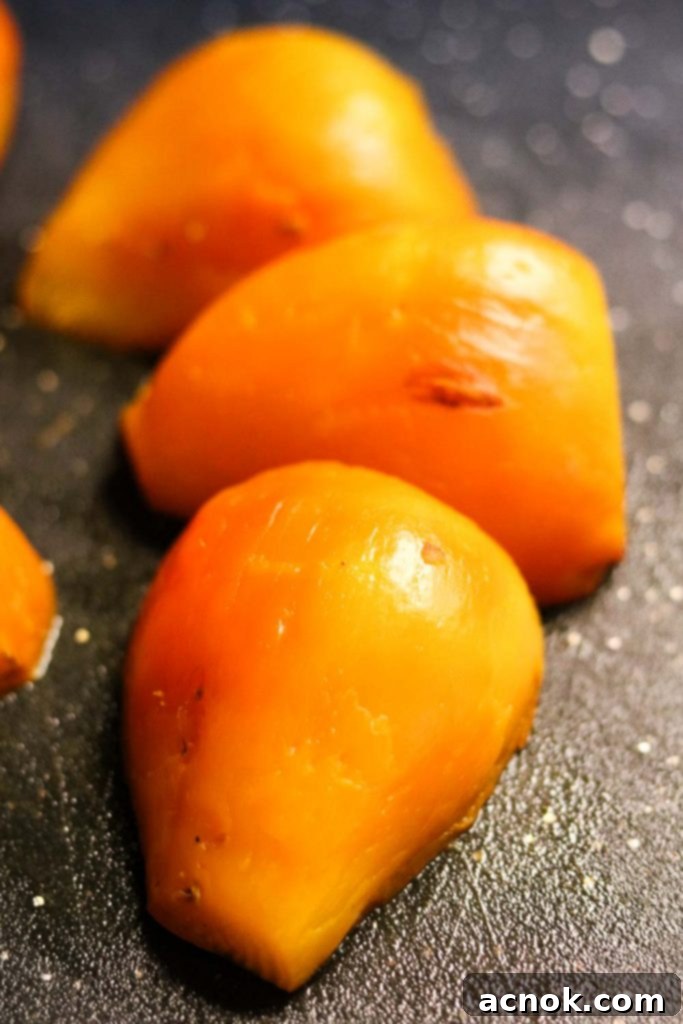
Expert Tips for the Best Roasted Beets
Achieving consistently perfect roasted beets is simple, especially with these insider tips:
- Choose Fresh Beets: Always opt for firm, unblemished beets. If buying with greens attached, look for fresh, non-wilted leaves, as this is a strong indicator of the beet’s freshness and quality.
- Consistent Sizing: Try to select beets of similar size or cut larger ones into smaller pieces (quarters or wedges) to ensure they cook evenly. This prevents some pieces from being overcooked while others are still hard.
- Don’t Overcrowd the Pan: Give your beets space on the baking sheet. If the pan is too crowded, they will steam rather than roast, preventing proper caramelization and the development of that rich, sweet flavor. Use two sheets if necessary.
- Experiment with Seasoning: While olive oil, salt, and pepper are standard, feel free to add other herbs or spices before roasting. Fresh thyme, rosemary, a touch of garlic powder, or even a sprinkle of balsamic glaze can elevate their flavor profile.
- Handling Red Beet Stains: Red beets are notorious for their vibrant pigment, which can stain hands and cutting boards. To minimize this, wear kitchen gloves while peeling and cutting, or perform these tasks on a dark or non-porous surface that cleans easily. Lemon juice can often help remove stubborn stains from hands.
- Golden Beets: If you’re using golden beets and want to preserve their beautiful, vibrant yellow color, it’s best to roast them on a separate sheet pan or in a separate foil packet from red beets, as the red pigment can bleed and tint the lighter varieties.
Endless Culinary Possibilities: What to Do with Your Roasted Beets
Once you have a batch of these delectable roasted beets, the culinary world is your oyster. Their sweet, earthy flavor and tender texture make them an incredibly versatile ingredient, perfect for a variety of meals and healthy beet recipes. Here are just a few ideas to get you started:
- Simple Side Dish: Enjoy them just as they are, perhaps drizzled with a little extra virgin olive oil, a splash of high-quality balsamic vinegar, a sprinkle of fresh herbs like dill or parsley, and a final pinch of sea salt and freshly ground pepper. This truly lets their natural flavor shine.
- Elegant Appetizer: Cube or slice roasted beets and serve them on crisp crostini (toasted baguette slices) with a smear of creamy goat cheese, a few fresh arugula leaves, and a light drizzle of honey or a reduction of balsamic glaze. Perfect for entertaining!
- Vibrant Beet Hummus: Blend roasted beets with chickpeas, tahini, fresh lemon juice, garlic, and a touch of cumin to create a stunningly vibrant and incredibly flavorful hummus. It’s a feast for both the eyes and the mouth, ideal with pita bread, crackers, or fresh vegetable sticks.
- Nutrient-Rich Salads: Incorporate them into hearty kale salads. Their sweetness beautifully balances the slight bitterness of kale, especially when paired with a tangy vinaigrette, crumbled feta or goat cheese, and toasted nuts like pecans or walnuts. They are also fantastic in mixed green salads with citrus segments.
- Warm Grain Bowls: Chop roasted beets and mix them into warm quinoa, farro, or couscous. Add crumbled Feta cheese, a handful of toasted pecans or walnuts, and some beautifully caramelized onions for a satisfying, wholesome, and flavor-packed meal that’s perfect for lunch or dinner.
- Beet & Orange Salad: Create a refreshing and visually stunning salad by combining sliced roasted red beets with segments of fresh oranges (blood oranges work beautifully for extra color), a sprinkle of crunchy pistachios, and a light citrus vinaigrette.
- Flavorful Soups and Smoothies: While primarily used for texture and color, roasted beets can be pureed and added to vegetable soups for a rich, earthy flavor and gorgeous color. For a health boost, a small amount can even be blended into a smoothie.
- Sandwich & Wrap Enhancer: Thinly slice roasted beets and add them to your favorite sandwiches or wraps for an extra layer of flavor, moisture, and nutrition. They pair wonderfully with hummus, avocado, various cheeses, and other fresh vegetables.
The options truly are endless! Roasted beets are a fantastic way to add color, flavor, and essential nutrients to almost any dish, making them a versatile component in your healthy cooking repertoire.
Storing Your Roasted Beet Bounty
One of the best things about roasted beets is how well they store, making them perfect for meal prepping. Once roasted and peeled, allow them to cool completely to room temperature. Transfer them to an airtight container and store them in the refrigerator for up to 3-5 days. They can be enjoyed cold straight from the fridge in salads or gently reheated if preferred for a warm side dish or grain bowl. For longer storage, you can even freeze roasted beets. To do this, arrange the cooled, peeled beets in a single layer on a baking sheet and flash freeze them until solid. Then, transfer the frozen beets to a freezer-safe bag or container, removing as much air as possible. They will keep for several months, though their texture might be slightly softer once thawed. This makes preparing beets in advance incredibly convenient!
Frequently Asked Questions (FAQs) About Roasting Beets
Here are answers to some common questions people have about preparing and roasting beets:
- Do I have to peel beets before roasting?
No, it’s actually much easier and often recommended to peel them after they’ve been roasted. The skin loosens significantly during the roasting process, allowing you to simply rub or slide it off with minimal effort once the beets have cooled slightly. Peeling raw beets can be messy and more challenging.
- How do I prevent beets from staining everything?
Red beets are known for their strong pigment, which can stain hands, cutting boards, and kitchen towels. To minimize staining, wear kitchen gloves when handling and peeling them. Use a cutting board that’s dark or non-porous (like plastic or glass), and clean up any splatters immediately with soap and water. Lemon juice can often help remove stubborn stains from hands.
- Can I roast different colored beets together?
Yes, you can! However, if you want to maintain the distinct vibrant colors of golden or striped beets, it’s best to roast them on a separate sheet pan or in a separate foil packet from red beets. The strong red pigment can bleed during cooking and tint the lighter varieties, potentially muddying their beautiful natural hues.
- What if I don’t have aluminum foil?
While foil is highly recommended for creating that steamy, tender environment that results in perfect roasted beets, you can still roast beets without it. Place them in a covered oven-safe dish (like a Dutch oven or a casserole dish with a lid). The lid will help trap moisture and create a similar steaming effect, though you might need to adjust roasting time slightly and check for doneness more frequently.
- How do I know when beets are done roasting?
The best way to tell if your beets are perfectly roasted is by performing a fork test. Carefully open the foil packet (mind the steam!) and insert a fork or the tip of a paring knife into the largest beet. It should slide in easily with little to no resistance, indicating that the beet is tender throughout and ready to be enjoyed.
Conclusion: Elevate Your Meals with Homemade Roasted Beets
Roasting beets is a culinary technique that promises big rewards for minimal effort. It transforms a humble root vegetable into a sweet, tender, and incredibly versatile ingredient perfect for enhancing salads, creating vibrant side dishes, or inspiring entirely new recipes. With this foolproof step-by-step guide and our expert tips, you’re now equipped to perfectly roast beets every time. Say goodbye to those sad, untouched bowls of old, and hello to a world of delicious, wholesome possibilities that will add color, flavor, and nutrition to your table!
Enjoy!
If you tried this recipe or found these tips helpful, please share your thoughts! We’d love for you to help other readers by commenting below and sharing some stars. Your feedback is truly appreciated! We 🫶🏼 appreciate you!
All content and photographs ©Claudia’s Table and claudiastable.com
